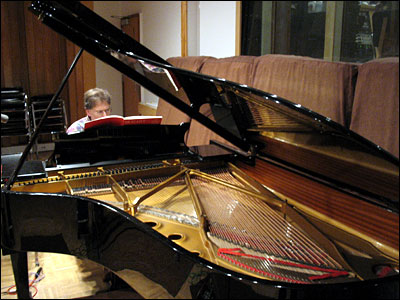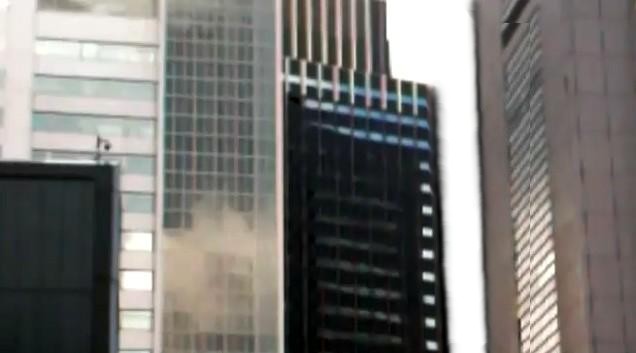







Perhaps some of you have already read of the now infamous evening last week when this Sportsman had the pleasure and privilege of meeting up with ADG, the wordsmith at the helm of Maxminimus. Max scooped me on the post and I have been intending to give yet a second account of that night.
I had read in passing thru ADG's very enjoyable and damn well crafted Blog that on occassion his business brings him to Philadelphia. I suggested we meet for drinks on one of his visits and he agreed. Apparently, he was not worried that he would wake up in a strange hotel down by the Airport with hastily sewn sutures over his abdomen where one of his kidneys had been harvested and sold to Russian drug lords.
On the appointed evening I suggested we meet at the Vesper Club. NOT the Vesper Boat Club pictured above, which is on the river and home to some very accomplished crew racers and scullers. Rather, the Vesper Club which is a private dining and drinking club tucked away on Sydenham street in Center City, across from the back door of the Philadelphia Raquet Club. The Vesper Club was organized back in the days when it was necessary to get around old Quaker "Blue" laws which forbade the sale of alcohol on Sundays. Vesper is a bit frayed around the edges, and is about as exclusive as a 7-11....but it has exceptional service, a great Bar, excellent food and barman and staff who know all the Members names, make you feel welcome, and know their business.
Max was all business when he sauntered in, greeted my friend Linc and I and immediately ordered a Stoli Martini, up with 3 olives. I was already working on a Basil Hayden's Old Fashioned.
Let me simply put it this way: ADG is, to borrow a phrase from one of my High School age children, "way cooler" than even comes across from his writings and photos on his Blog. We were instantly at ease with one another. As I stated in a comment on his far more creative narative of the evening, meeting Max/ADG was like catching up with a long lost Fraternity brother...albeit a better dressed version than the beer-swilling maniacs I banged around with at Lehigh.
We drank, ate clams casino and jumbo lump crab meat,drank some more and touched on numerous topics. He even hit it off with one of my oldest buddies,Linc, who came along as my wing-man as he never misses a chance to drink at the Vesper Club and smoke a good cigar. Coincidentally, another boyhood friend came in that night, a guy I have hung out with since 7th grade.
As the talk and ribbing and jokes and laughs and anecdotes poured like the hooch, we hit topics ranging from the raising of daughters and dealing with their boyfriends,to our mutual obsession with collecting antique toy soldiers. We talked about WWII history and Ambrose's book "Pegasus Bridge" (he had an interesting personal connection to that story) to sporting art and prints such as A.B. Frost and the Vanity Fair prints and watercolors he collects. We discussed other Bloggers and their posts and ones he'd met and the ones we thought were great and the ones we thought were less than great. We talked about guns and gunning and I promised I was going to get him out duck hunting. We talked about owning our own businesses and we had a similar curiosity about the particulars of each others professions.
As tends to happen when guys get drinking and bullshitting, the time flew and I suggested we adjourn around the corner to Chris' Jazz cafe, the Jazz Club I owned from 1999 to 2006. I sold my interest to my partner who still runs the place but still hang out there and get what we used to call "The Sinatra Treatment" anytime I come thru the door. It is a great joint.
So we arrived and I dragged him through the kitchen and to the office to meet my former partner: my particular friend Mark. Max was still hungry despite the clams and crab, and he needed a booze sponge. Mark is Italian and takes it as a personal affront if someone is going around hungry within 10 blocks of his Joint..He is always one to oblige a hungry guest so a delicious hot roast beef appeared for Max's enjoyment and sustenance. We continued to laugh and talk and enjoyed the Guitar jazz wafting from the stage.
At the end of the evening a sartorial disaster did unfold which accounts for the scorched jacket pictured above and described in Max's post. I leave it to him to disclose exactly how this unfortunate episode of rapid oxidation was visited upon his Flusser-made jacket. Knowing him and his clothes obsession thru his Blog, I fully appreciated the horror he must have felt...but he was a good sport and took the calamity in stride.
We popped next door to my garage, collected my Caddy, and I dropped him at his hotel. In retrospect I should have driven my F-150 hunting truck with the custom camo seat covers just to stay in Sportsman's persona.
In the final analysis it was a great night enjoyed with a great guy. Max's mix of South Carolina charm, worldly wit and refinement, and well read and well bred perspective, along with his uncanny attribute of seeming like a long lost buddy, makes for a guy you would be happy to spend time with anywhere from a Tap-room banging back drinks to an auction house seeking rare prints or a Football game or a quiet dinner party and everything in between. Now that we have the mutual admiration posts out of the way....what about that jacket.....




















